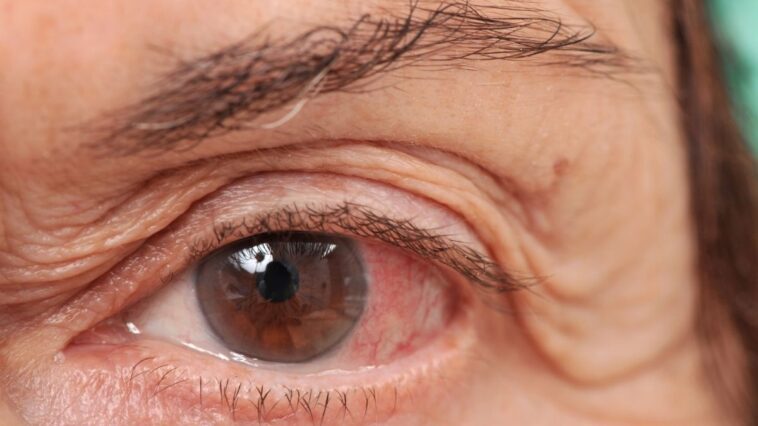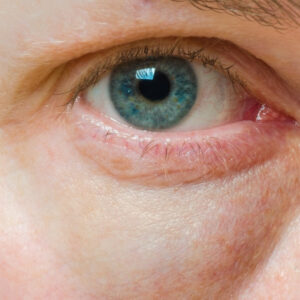An eye infection is an inflammation or infection of the eye or surrounding tissue. It can be caused by various bacteria, viruses, fungi, and parasites and can affect one or both eyes.
Signs and Symptoms of Eye Infections
Several signs and symptoms may indicate that you have an eye infection. These may include:
- Redness: One of the most common signs of an eye infection is redness of the eye or the surrounding tissue.
- Swelling: An infected eye may be swollen or puffy, and the eyelid may also be swollen.
- Discharge: An eye infection can cause a discharge from the eye, which may be clear, yellow, or green in color.
- Pain or discomfort: Eye infections can cause pain or discomfort, especially when you try to move your eye.
- Blurred vision: An eye infection can cause your vision to be blurry or unclear.
- Sensitivity to light: An infected eye may be more sensitive to light than usual.
- Itching: An eye infection may cause itching or a feeling of irritation.
- Crusting: An eye infection can cause crusting around the eye, particularly when you wake up.
These may be symptoms of an eye infection, and if you’re experiencing any of these, you must contact your eye doctor immediately. Don’t wait until the problem escalates – get advice from a professional who can help determine the cause and provide treatment.
Eye Infection Causes
Many different things can cause an eye infection. Some of the most common causes include:
- Bacteria: Bacterial infections are one of the most common causes of eye infections. They can be caused by various bacteria, including staphylococcus, streptococcus, and Pseudomonas.
- Viruses: Viral infections, such as the common cold, can cause an eye infection. Other viral infections affecting the eye include herpes simplex, varicella-zoster (chickenpox), and cytomegalovirus.
- Fungi: Fungal infections, such as aspergillosis, can cause an eye infection. These infections are more common in people with weakened immune systems or those who have had eye surgery.
- Parasites: An eye infection can sometimes be caused by parasites, such as the protozoan Toxoplasma gondii. This infection is commonly seen in people with weakened immune systems or who have been in contact with contaminated animals.
- Allergies: Allergic reactions to things like pollen, dust, and animal dander can cause eye irritation and inflammation, leading to an eye infection.
- Environmental factors: Exposure to irritants such as smoke, chemicals, and wind can cause eye irritation and inflammation, which can lead to an eye infection.
- Physical injuries: Eye infections can be caused by eye injuries such as scratches and foreign objects that get into the eyes. Injuries to the eyes can make it easier for bacteria and viruses to cause an infection.
- Other medical conditions: People with weakened immune systems, such as diabetes and HIV, are more likely to develop eye infections. These individuals must take extra precautions to ensure they don’t contract an eye infection.
Diagnosing an Eye Infection
There are several methods that an ophthalmologist or optometrist may use to diagnose an eye infection. These may include:
- Physical examination: The healthcare provider will examine the eye and surrounding tissue for signs of infection, such as redness, swelling, and discharge.
- Visual acuity test: This is often part of the diagnosis of conjunctivitis and involves reading a chart of letters or numbers from a distance to determine how well the patient’s vision has been affected.
- Slit-lamp examination: During this exam, the eye doctor will usually use a slit-lamp examination carried out with a special microscope named a slit lamp to examine the front of the eye in detail.
- Fluorescein staining: A dye called fluorescein is placed on the eye, and a special light is used to check for scratches or other damage to the cornea.
- Culture: A sample of the discharge from the eye may be taken and sent to a laboratory to be tested for bacteria, fungi, or other microorganisms.
Based on the results of these tests, the eye doctor can diagnose the type of eye infection you have and determine the most appropriate treatment.
Types of Eye Infection
Eye infections come in many forms and have different causes. Common forms of eye infection include
- Conjunctivitis: Commonly called pink eye, it is an infection of the conjunctiva, the thin layer of tissue that lines the inner surface of the eyelids and covers the white part of the eye. It can be caused by viruses, bacteria, or allergies and is characterized by redness and itchiness in the eye. Medical treatment is necessary to relieve symptoms and speed up healing.
- Keratitis is an infection of the cornea. It can be caused by bacteria, viruses, fungi, or parasites, leading to scarring or vision loss if not treated promptly.
- Blepharitis is an eyelid infection that can cause redness, swelling, and crusting around the eye. It is often caused by bacteria or skin conditions such as dandruff or seborrheic dermatitis.
- Orbital cellulitis: This is a severe infection of the tissue surrounding the eye. If not treated promptly, it can cause redness, swelling, and vision loss.
- Endophthalmitis: This is an infection of the interior of the eye. It can be caused by bacteria, fungi, or other microorganisms, leading to vision loss if not treated promptly.
- Uveitis is an inflammation of the uvea, the eye’s middle layer. It can be caused by infections, autoimmune disorders, or other underlying conditions.
- Herpes simplex keratitis is a cornea infection caused by the herpes simplex virus. It can cause vision loss if not treated promptly.
Treatment Options for Eye Infections
Eye infections can occur from various causes and present with various symptoms. Depending on the cause and severity, treating an eye infection may involve the following:
- Antibiotics: If the eye infection is caused by bacteria, the healthcare provider may prescribe antibiotics like eye drops, ointments, or pills.
- Antiviral medications: If the eye infection is caused by a virus, the healthcare provider may prescribe antiviral medications in the form of eye drops, ointments, or pills.
- Antifungal medications: If the eye infection is caused by a fungus, the healthcare provider may prescribe antifungal medications in the form of eye drops, ointments, or pills.
- Corticosteroids: In some cases, the healthcare provider may prescribe corticosteroids to reduce inflammation and swelling. These medications may be given as eye drops, ointments, or pills.
- Lubricating eye drops: These eye drops can help to moisturize the eye and reduce discomfort. They may be recommended if the eye infection is causing dryness or irritation.
- Hot or cold compresses: Applying a warm or cold compress to the affected eye can help to reduce swelling and discomfort.
- Surgery: In severe cases of eye infection, surgery may be necessary to remove infected tissue or to repair damaged tissue.
It is essential to follow the eye doctor’s treatment instructions and finish all prescribed medications, even if the symptoms improve. You must see your doctor again if the infection does not improve or worsens.
Prevention of Eye Infections
Taking certain precautions is essential for reducing the risk of eye infections. These steps include:
- Wash your hands frequently: This is especially important if you are around someone with an eye infection.
- Avoid touching your eyes: Touching your eyes with dirty hands can introduce bacteria or other microorganisms into your eye, leading to an infection.
- Disinfect contact lenses: Properly disinfecting your contact lenses and storing them in a clean case can help to prevent eye infections.
- Avoid sharing eye makeup: Sharing eye makeup can spread bacteria and other microorganisms from one person to another.
- Avoid swimming in pools or other bodies of water: These can be breeding grounds for bacteria and other microorganisms that can cause eye infections.
- Wear protective eyewear: Wearing protective eyewear, such as goggles or glasses, can help to prevent eye injuries and infections.
- Use a humidifier: If the air is dry, it can make your eyes vulnerable to infection. This is why a humidifier can be so beneficial to keep your eyes healthy – it adds extra moisture to the air, which helps protect you from getting an eye infection.
Summary
Eye infections are caused by various bacterial, viral, and fungal pathogens, which can cause inflammation, redness, discharge, eye pain, and vision changes.
If left untreated, these infections can lead to severe complications.
Treatment typically involves using prescription medications such as eye drops, ointments, or oral medications, depending on the cause of the infection.






